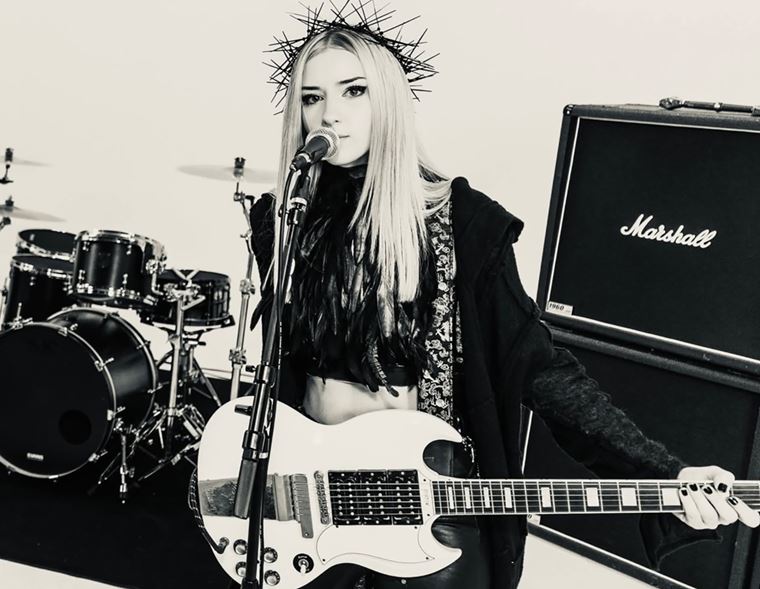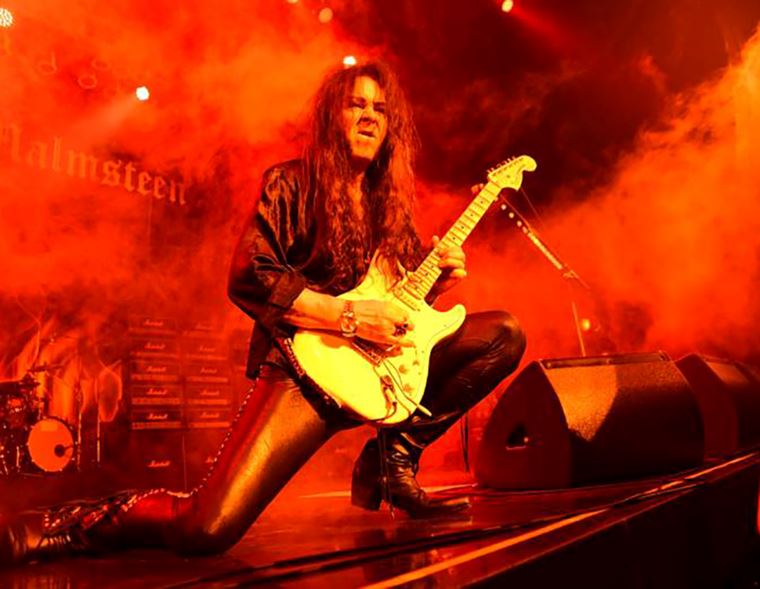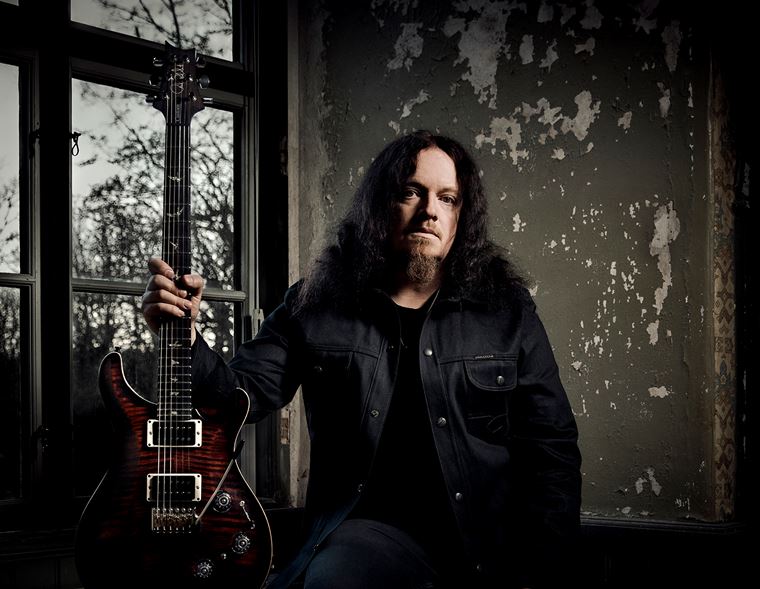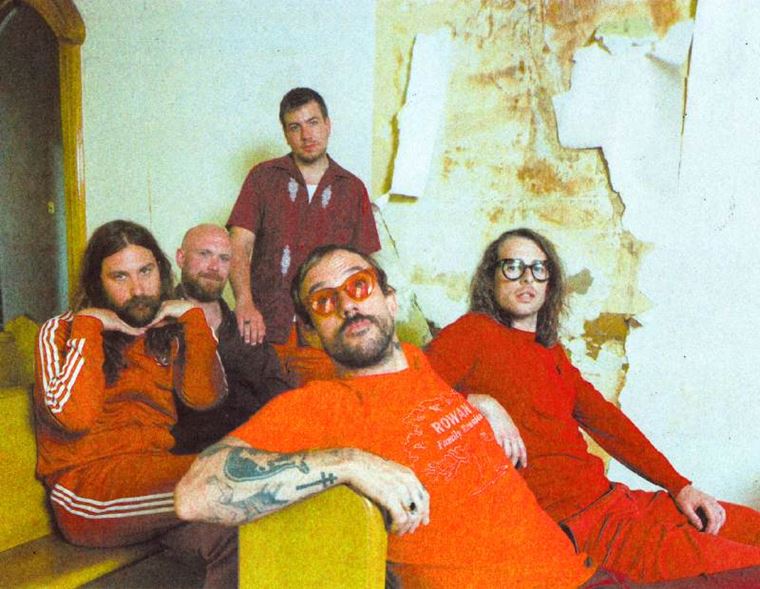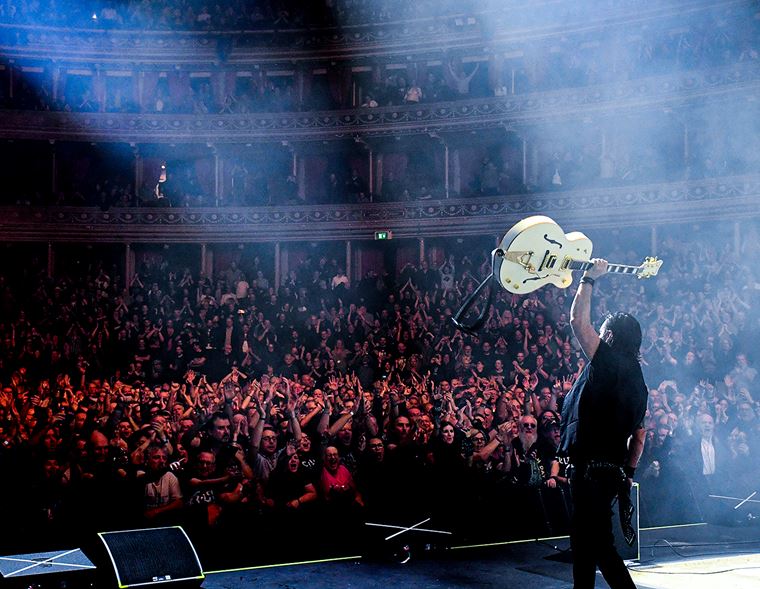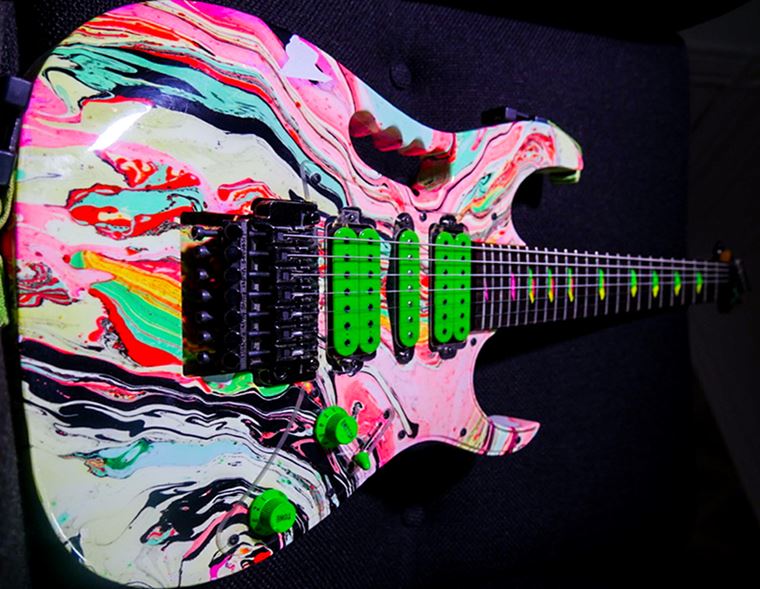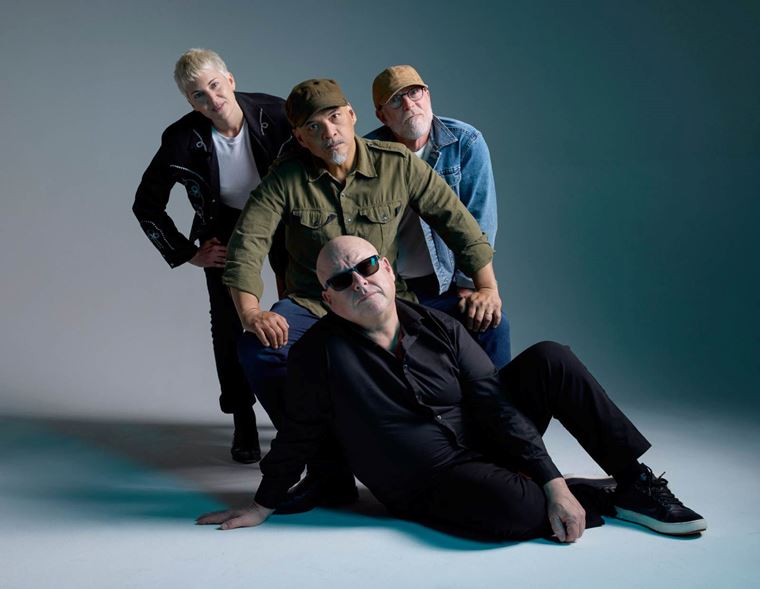The guitarguitar Interview: Steve Vai (Part 2)
Published on 26 March 2020
Welcome to Part Two of our exclusive, long-form interview with the legendary Steve Vai! If you missed Part One, please click here and get yourself caught up! For everybody else, let’s dive right back in! Previously, we’d covered the PIA guitar, the DiMarzio UtoPIA pickups, Tom Waits and Ghost.
This time out, we hear about Steve’s amplifiers, from back in his high school days right up till now with his new Synergy module. We hear his thoughts about the importance of intention and emotional connection in music, and whether he’ll ever write an autobiography. You’ll read as Steve teaches me how to play that crazy whammy trick in the middle section of Bad Horsie, and how playing Lotus Feet is not as important as feeling Lotus Feet. If you are looking for some artistic inspiration, you’ve come to the right place...

(photo: Michael Mesker)
Steve Vai: You know, it’s funny, because when I was young, I paid such little attention to tone and amplifiers, because I could never afford anything.
Guitarguitar: Sure.
SV: So, I just used whatever I could get my hands on. The idea of having like a Marshall stack was such a fantasy, I didn’t even think about it: it wasn’t even on my radar! Some of my friends had Marshalls and I was like: ‘How did you get the money for that?’ (laughs)
GG: Yeah!
SV: So, I used anything I had. The Fender Bandmaster was my amp that I used all through high school. And then I moved to LA and started working with Frank so there were obviously more amplifiers available to me, and I started using some of his. I mean, he had Marshalls, he was experimenting with Carvin, he had some of these amps called Acoustics. I ended up using the Acoustics, only because I discovered that the Marshalls just weren’t my real sound. I loved them when other guitar players used them, but when I put my fingers on a guitar that’s plugged into a Marshall, I don’t know, it’s sort of like my little inspiration stick curls up or something.
GG: Hahahaha!
SV: You know? It’s weird!
GG: That’s good.
SV: I have to fight it, or something. I’m like, all these other guys sound so good with Marshalls and they play so well, and whenever I play through one it just doesn’t work for me. But then, as I graduated into the David Lee Roth band, I really needed some horsepower.

(photo: Michael Mesker)
GG: Sure.
SV: I found this guy, Jose Armando, he’s a historic amp tweaker, you know?
GG: Yeah.
SV: He’s tweaked, like Edward (Van Halen)’s amps, his Marshalls, so I bought, like, 3 or 4 really nice vintage Marshalls and I gave them to him to tweak. Those were incredible! Those I used extensively, all through the David Lee Roth days and the Passion and Warfare recordings. Then my ears started to change and all of a sudden, all of these other amplifiers started coming on the market. I went through a huge Soldano phase, loved those amps for a while. I use those in Whitesnake. And through my solo career, things like Bogner: the Ecstasy came out and I used that for years. And these...the thing that I noticed with these amplifiers, these newer ones, is that they were just a different kind of tonality from the Marshalls.
GG: Yeah.
SV: And when I started putting my own shows together...you know, my shows consist of probably two and a half to three hours of either a guitar solo or a guitar melody! (laughs) So you’re beating people up with a pitchfork all night, you know? So, I need a tone with a sort of friendly feel to it, because there’s so much guitar!

GG: Totally.
SV: So the Marshall, and that sound, and those kinds of amps, uh, are definitely historic and have their place but for me, and my application, that sound wasn’t quite right. So, when I got into a position where I was able to start working with other companies and have them kind of build something around my specifications, that was like a real win!
GG: Hell yeah.
SV: That’s when my relationship with Carvin kicked in. Now, I had known Carvin: they were one of the very first amplifier companies I was aware of when I was a young boy.
GG: Sure.
SV: For some reason, I had gotten on their mailing list. At the time, you gotta remember this was before the internet or digital or anything, where you had to get magazines to see what’s going on in the world! (laughs) I think I got, like, a Guitar Player magazine and I wrote away to get this catalogue from Carvin. And guitar catalogues were like wet dreams, man!
GG: Hahaha!
SV: Giant walls of amplifiers, stacks that looked like Marshalls, but, you know...and they were willing to work with me.
GG: That’s awesome.
SV: And I met them through Frank in 1980: that’s how long back my relationship with them goes. But there was always something about those amps, the Carvin amps, that still weren’t quite right for me. I was using the X-100B amp for a while and it was nice, but still, you’re always on a quest, you know?
GG: Yeah, I definitely do!
SV: And I had this tone in my head, but I never really thought that there would be a possibility to search for it in reality, because I didn’t know how you’d go about doing that!
GG: It’s like you’re breaking new ground.
SV: Yeah! And I met with Carvin years later and they said well, we can do that! We just work on it and tweak it until it sounds just right to you. So, this was probably back in...oh my goodness...(I laugh)...I’m so bad with dates, I am so bad with dates....maybe, um early 2000s?
GG: Sure!

(photo: Michael Mesker)
SV: So, that’s when I started to study amplifiers: the actual infrastructure of them, how they work and what various capacitors do, transformers, how they’re built, and the quality ones and the shit ones, you know, so I spent a year probably, just educating myself. Then I got together with the designers at Carvin and for probably a year and a half, they just kept making amplifiers for me to try and then tweak. And then finally, the Legacy came out. The Legacy 1, to me, was the amp. That, for me, was more suited to my playing and my style and my music than anything I had played before that. At least to me it was, you know?
GG: Sure!
SV: So, this was fantastic, because now I had the amp I always wanted, and an endless supply of them, basically, and a company that was completely willing to evolve with me with all this stuff. So, we kinda pushed forward and I was using the Legacy and it was doing great and I thought: there’s a couple of little things I’d like to change. Some of the input and outputs, maybe change the gain structure a bit. So, then we went into the Legacy II.
GG: Mmm.
SV: And you know, sometimes, it’s very interesting: you never really know what something is gonna sound like until you take it on the battlefield. Now, when you’re on the stage, it’s very different from when you’re sitting in your studio or your bedroom cranking through an amp that you believe sounds good.
GG: Heheheh.
SV: You’re never really gonna know until you hit the stage, because when you get out there, your amplifier, your sound, your tone, is competing with things like drums, cymbals, the bass, the other guitar player, the sound of the room, what’s on the walls of the room, how long the room is, the floor, all of these things create frequency build-ups. If you don’t have an amplifier that has the body and tone to cut through that shit, you’re just gonna sound like a deranged mosquito!
GG: Haha!
SV: Haha, you know? It’s just gonna sound like a buzz in the background and if you turn it up, it’s just painful. So, when I got the Legacy II, when I finally took it out into the battlefield, it just didn’t hold up the way I was hoping.
GG: Aww, that sucks.
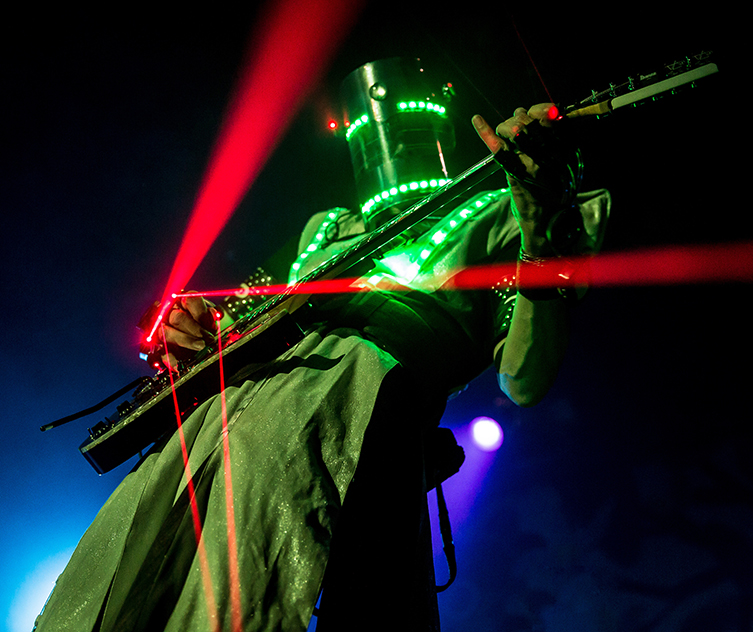
SV: Yeah. So, then we moved on to the Legacy III. This was basically, not a whole redesign, but it went back to the guts of the Legacy I, but with more features as far as a gain control for the clean channel, a couple of little in-and-out variations. We used a very swift, new kind of packaging, because the Legacy III is smaller than a normal head, it’s all metal, it’s got different colours, it’s got a light inside of it...
GG: That’s right, I remember it, yeah!
SV: But the integrity of its construction is that of a, you know, normal-looking amp. But then, the new rage of pedals-as-preamps started to come out. Carvin started making preamps that were the preamp section of the amp itself in a pedal.
GG: That’s right.
SV: So I thought: this is fantastic, because now I can take my preamp, my sound – because the majority of the sound is in the preamp – I could take it with me if I go on a trip someplace, doing like a one-off, and just plug it into a power return and into speakers and I’ve got my sound. That worked fantastically, and still does! Carvin made a preamp foot pedal out of the Legacy and it’s called the VLD-1 Legacy Drive Pedal.
GG: Is that, to your ears, just as good as the heads themselves are?
SV: Well they’re exactly the same.
GG: Ok, got you, it’s literally the same thing, just in a different enclosure. I thought it would have to be modified.
SV: Yeah, the preamp sections are exactly the same.
GG: Cool, I’m with you.
SV: Yeah, so if you came out of that and went into the power amp return of a Legacy, it would just sound exactly like my Legacy. But if you went into the return of a Marshall or something, it would, you know, it’s obviously coloured a bit.
GG: Sure.

(photo: Michael Mesker)
SV: So then, Carvin kinda slowed down, and their company split up a bit. They still offer the VLD-1 pedal, which is the Legacy pedal, but I needed more support. I needed more of an ability to expand.
GG: Mm.
SV: So, then I started recognising this company called Boutique Audio. And Boutique Audio is this brilliant company: what they do here in Southern California is, they make all of the cottage industry amplifiers for the unique brands like Soldano and Friedman, etc etc, you know?
GG: Yeah.
SV: They actually build them and ship them out. Now, I’m not exactly clear about this, but at some point, the company...oh, what was that amplifier company? They started using these modules?
GG: Oh yeah, Randall.
SV: Randall! Randall, that’s it. Randall started using these modules that were preamp sections of amplifiers. I thought that that was brilliant! I didn’t really know about it when Randall was doing it. For some reason, I was told that the way they were doing the preamps themselves were not wildly accepted. I don’t know exactly why, but the owner of Boutique Audio, I believe, either cut a deal with Randall, or they purchased Randall, I’m not exactly sure, but they acquired that technology to create these modules. But what they did, was they licensed with a lot of these boutique amplifier companies, the exact schematics for the preamp section of all these incredible amps. And they built them. When I heard that this was possible, I was pretty stunned, because what it allows you to do – and I’m standing in front of my rack right now and I have (quietly) one, two three...six Synergy modules in the rack, so that’s six different amplifiers.
GG: Wow.

SV: One of them is a Plexi. Now, some of the amps that they created were not licensed by Fender or Marshall, so they made, like a lot of companies do, similar kinds of preamps, you know?
GG: Yes.
SV: Also, I wanted to make clear that these preamps, whether it was the Carvin VLD1 or these Synergy ones, there’s nothing ‘modelling’ in it: they’re not modelling, there’s nothing digital. They’re all analog, tube preamps that are based on the exact schematics, basically, from the companies that they licence the technologies from. So, I have a, uh, it’s called a BMAN, it’s like a Bassman. I have a TDLX, which is a Fender Deluxe...
GG: Yup.
SV: I’ve got an AC30...
GG: Nice!
SV: Yeah, I’ve got my module here, the new one, it’s coming out. What else do I got in here...AC30...well, that’s it for now, but the cool thing about this is, you can also...oh, I got a Friedman, too.
GG: Friedman are brilliant. The Brown-Eye? Very good.
SV: Fantastic, Friedman stuff’s fantastic. Dave Friedman is completely in touch with his inner ear and makes fantastic products. He even worked on the Vai Synergy module to help make it what it is. So, I was in a bit of a pickle trying to figure out which amplifier company I would go with. I started getting an influx of all these incredible amps from all these great companies, you know? I’ve got, like, Victory here, and there’s really great company, Mezzabarba, they sent me some top-class stuff, and DV Mark, you know?
GG: Uh-huh!
SV: All these guys were sending me these amps and they were great, but I didn’t feel like...I just thought that it would be a better idea to be able to have an array of top-notch amplifiers at my feet, as opposed to having one amplifier.
GG: Yeah, without doubt!
SV: So, that’s when I decided that Synergy was the way! I worked for quite a while with their design time to design my module, which was sort of the evolution of the Legacy, similar to the way the PIA is an evolution of the JEM.
GG: I see.
SV: Now, each of these modules has two channels to it, so, at my feet I have all these different amps, and they all sound authentic, and I’ve checked, brother!
GG: Hahaha!
SV: Now, with the way that I explained how we went through the testing of the UtoPIA, I do that with virtually everything that I settle on. I compare it. And with these Synergy models, I got to the point where I compared them to the same amps they were designed after, and the only difference is, I mean, if you’re playing through a Deluxe, the speaker’s already in place the way it’s laid out in a Deluxe, you know what I mean? So that’s definitely got some kind of a tone to it. But when it comes to my rig, it sounds like a Deluxe, just going through my speakers.
GG: I see what you’re saying.
SV: But: that sound also has access to my entire rig, so all the delays, all the weird FX, they can be used through any of these amplifiers. It’s not like I have to go plug into another amplifier and have another whole rack. It’s amazing! If you’re into this kind of variety, this is the way to go!
GG: Indeed! So, with the Synergy Vai module, it’s picking up where your Carvin Legacy amps left off? Would that be a fair way to say it?
SV: Yeah.
GG: So, it’s two channels, and are we talking about sick levels of gain here?
SV: It gets pretty sick, yeah. (laughs) But that’s a matter of the power amp. And what I’ve been using is: Synergy also has a 1-rack space, very high-quality tube, 100-watt or 50-watt power amp. So that’s what I use for the Synergy modules. It’s good, clean power, and you can make that as loud as you want!
GG: Wicked! And do you also use a 4x12 or 8x12 cab with these? Or do they go direct?
SV: No, it’s based on what I’m doing. I’ve never gone direct with my guitar in a live setting. With a lot of guys, it’s kind of a trend these days to plug directly into something like an Axe FX and use the modelling, and then come right outta that and go into the mixing consoles. So you’ve got this very direct, clear sound. I love that idea, but I just don’t use modelling amps.

GG: Sure, of course! So, it’s never gonna be an issue for you.
SV: Maybe, maybe not, because are you familiar with the Ox? Universal Audio?
GG: The Ox box! Indeed, I am, it’s incredible.
SV: Yeah, that’s an amazing device, too. It loads down the amp and it also gives you a great speaker output, so if you plug the output of your speaker into it and then go direct with that, you’ve got your analog amp, you’ve got no latency basically, with the exception of the FX you’re using. All my FX are the Axe-FX and there’s very, very little latency in that thing (laughs). I think the new Axe-FX III has .68 milliseconds or something like that.
GG: Wow, that’s negligible.
SV: Yeah, I can’t really feel it. If I’m using a lot of effects, it’ll get up to like 1 or 2 milliseconds perhaps, but even that doesn’t throw me. Anything over 3 milliseconds, I start feeling like...like d’you ever, like, jump rope and you get your feet tangled up?
GG: Hahahaha!
SV: Haha! It’s like trying to run but your sneakers are too big or something!
GG: That sounds like most of my nightmares actually, Steve, so yeah! Totally!
SV: Yeah, it is like a nightmare! A lot of these modelling amps have about 10 or 12 milliseconds of latency.
GG: It’s too much!
SV: Yeah! Well, for me it is.
GG: Even when I’m recording a quick demo with Guitar Rig (Native Instruments software), I can handle it until it gets to around 7 or 8 milliseconds, then I get that feeling of standing next to your soul rather than inside your own body! It’s horrible!
SV: Yeah! That’s a great analogy!

GG: Haha! So, I wouldn’t mind asking you a couple of questions about specific guitar parts of yours, just very briefly, if that’s okay?
SV: Sure!
GG: Cool! So, when I was a teenager, my friend lent me Alien Love Secrets. That was the first Steve Vai record I ever heard, and it destroyed me, man! I couldn’t believe what I was hearing! And the one that got me was Bad Horsie, the part right in the middle where it all breaks down. You have that really long delay effect on the guitar and it’s this ridiculous squeal, this harmonic squeal: do you know the bit I mean?
SV: Yep.
GG: I have the tab book for that and it’s still impossible! How do you do that? Is it a pinched harmonic with the whammy bar pulled up to get that noise?
SV: Uh, it’s the whammy bar pulled down, I go down.
GG: To get that high-pitched noise?
SV: Yeah, that’s a pinched harmonic with the bar being depressed.
GG: No way!
SV: I think so! Now I gotta go listen to it. Haha!
GG: Hahaha, it’s incredible, because I’ve seen you perform that live and that, to me is a really specific bit of guitar playing. There’s no margin for error, especially with the delay signal that’s gonna repeat everything that you do!
SV: Unfortunately, I make errors sometimes!
GG: Ah yes, it’s rubbish being a human being, isn’t it?
SV: Hahahaha! Yeah, what’s going on here?

GG: Hahaha! Okay, that’s good to know about that Bad Horsie part. The other bit that I’d love to talk about actually goes back to the imagery of your guitars and album covers. It’s the piece called Lotus Feet, from the Real Illusions Reflections album.
SV: Yeah, give me one second, I just wanna be... (I can hear Steve playing the recording of Bad Horsie in the background) ...yeah, that’s a pinched harmonic, going down with the bar.
GG: So you pinch the harmonic and then go down with the bar.
SV: Yeah. There’s a little bit of a bend up first.
GG: Yeah! Cool, right, cool! That’s the bit that threw me.
SV: It’s not bent up with the bar: I pinch harmonic and then stretch the note up and bring it down with the bar.
GG: I kept trying to bend it up with the bar and was failing horribly. Thanks for indulging me there: it may be a small thing for you, but lots of my fellow players can’t get that part so thanks for confirming it!
SV: Hahahaha! You know what’s funny about that song? Whenever I perform it, the harmonic that I play in the actual melody (hums the main lead line down the phone) and then there’s this real squeal in there, I always try and get it to sound like a horse!

(photo: Michael Mesker)
GG: Haha, yeah, totally!
SV: And if you listen to the recording I did on the last Generation Axe record, that’s the real pony! It’s unbelievable how much it sounds like a horse! Hang on one second, I’ll find it... (Steve heads back to his music)...right here! (The sound comes out of his speakers and down the phone. Right enough, it sounds like an uppity horse from a Wild West movie. Both of us sit laughing at the sheer drama of the noise coming from Steve’s guitar on the recording.) If you listen to the one that I did on the live Generation Axe, it sounds just like a fuckin’ horse!
GG: Amaaaazing!
SV: It’s really funny how that came out! That record came out last year. But you were mentioning Lotus Feet.
GG: Lotus Feet. So, Lotus Feet, it’s fair to say, is not the easiest song in the Vai repertoire to play, which is saying something. I’d be really interested in hearing about the composition of it in regard to the orchestra, but before I get there, there’s a bit that I listen to constantly, an absolutely incredible part that’s like a crescendo, with a flurry of really fast notes. It’s not just shredding, it’s really artful and emotional sounding.
SV: Yeah, at the end?
GG: At the end, yeah. It’s just a great musical moment. Is that just hammer-ons and pull offs? Am I right in saying that?
SV: The way that I play that is not nearly as important as what I was thinking when I built it and what I’m feeling when I play it. You know what I’m saying? Sure, it’s hammers, it’s just pulls offs and stuff, you know, it’s flutters: I call them flutters.
GG: Uh-huh!
SV: But, that song...uh, every now and then in an artist’s career, the gods of inspiration will sprinkle some fairy dust on them.
GG: Yes.
SV: And I believe that happened to me with that song.
GG: Haha, I believe that, for sure.
SV: Yeah, the melody, the way it came, the meaning of the melody and how it fits into the Real Illusions story when I was building it...there’s a whole story behind the song. It includes a character, and as I was imagining the emotional state of mind of this character, that melody came out of me. So, in creating a song like that, there’s obviously the academics, like where the chord changes are, how the melody works with the chord changes, how I fingered various challenging licks...this is all theory and academic stuff, and that all has its place and can all be explained.

(photo: Michael Mesker)
GG: Sure.
SV: I can explain it because I know all that stuff, but it’s really just the skin. It’s not even the skin, you know? It’s just...it’s way in the background in comparison to the emotional intention that I was embracing when writing the melody. And this is a very powerful, creative tool for people. When you can imagine in your mind how you want to feel when you hear something. So you create a sort of feeling, and you have to go there. And then, what comes out of you has to – it must – be joined at the hip with the way you feel. There’s no way around that, you know?
GG: Yeah.
SV: So, when that fast part comes, I can explain everything in theoretical and academic ways, what I did there, and I’m happy to. But the real gist of that riff that goes on and on really fast like that in that one section?
GG: Yeah?

(photo: Michael Mesker)
SV: It was meant to feel incredibly triumphant.
GG: Ha! That’s exactly what it is! There’s no other word for it. That’s why I’m so interested in that part. I thought that if I had the opportunity to talk to the creator of it, I can’t not mention it. It’s such an incredible piece of music.
SV: Thank you.
GG: Oh, thank you!
SV: It’s kind of hard to explain sometimes, you know, what those intentions are when you’re making that stuff but I also knew that when I’d perform it, I had to reflect what that part meant in the story, which is absolute freedom, triumph, with no limitations. There’s the feeling of openness, and freedom, so this is an emotional state, you see what I’m going for here?
GG: Yeah, I do!
SV: It’s an emotional state of being that I embraced in my mind and then the picture of the way to perform it just came. The language that my mind used was: okay, you gotta go up high, you gotta play these notes here, and they have to be performed this way, they have to sound completely effortless, completely free, completely impossible, and joyous!
GG: Yeah!

SV: Triumphant! And you can do that, anybody can do that, but they get caught up sometimes in the academics of it. So, you capture in yourself the emotion you want. You can do this with anything: with a book you’re writing, with a story you’re writing, with a painting, with a cooking recipe, with a business; you go there first with your mind.
GG: I’m with you.
SV: And you feel what it would actually feel like to be doing it, and then it has to come out!
GG: The thing I love about that particular piece is that, even though it’s fast, it’s quite ego-less. The thing is, Steve: you’re a very capable player, so when you have that emotional idea to say ‘this character’s going this way and I’m feeling it and going with them’, you then have the fingers and the dexterity and the stamina in the fingers to be able to just express that. (laughs) Not everybody else does! So, I totally understand that you’re inhabiting that emotional intensity of that person, and you’re removing your own ego from the guitar part: my problem, then, is that my damn hands won’t play the notes!
SV: Well, let me give you a little pointer. You don’t have to do it like that. It’s very nice when something comes along, like Lotus Feet, that can inspire you, and trying to learn it can be very helpful. But, it’s just a device, it’s just an example of what you can do in your own music. So, for instance, what I’m saying is, you could reach that peak of triumph and freedom without necessarily having to play fast.
GG: That’s a beautiful thing to say.
SV: Yes, and you, YOU, can do that.
GG: Haha, well, that’s the goal, certainly.
SV: You just have to go there in your mind, and it’ll come out through you, based on your natural, unique, creative insight. You know what I’m saying?
GG: Yeah, absolutely!
SV: It won’t sound like Lotus Feet, but it will sound like something just as powerful and effective.

(photo: Larry DiMarzio)
GG: Well, the good news is, you’ve already done Lotus Feet, so I can go off and do my own version, using those amazing insights you’ve shared. And that’s better for everyone!
SV: Hahaha! There was a time where I was much more of a wanker than I am now! (we both laugh) You know, I loved the ability to play fast, and I loved to fascinate myself playing fast, you know?
GG: Yeah.
SV: There was probably much more ego in it at one point. But then it gets tired, you know? If your desire to play fast is based strictly on the fascination of playing fast, let me tell ya something brother, it wears thin quick! You bore yourself and you bore the audience! My good friend, the frighteningly talented and hilarious Steve Lukather once said to me: “Being able to play really fast is like having a 13-inch penis. It’s cool to impress your friends with, but what are you really going to do with it?
GG: Indeed.
SV: So, through the years, I’ve discovered that I don’t have to do that. As a matter of fact, it’s much more effective when you don’t, when you use the ability to...let’s say shred...at the right point. Then it has so much more meaning, because I’ll tell ya: the way that I shred in that spot in Lotus Feet, is nothing, I don’t believe it’s anything that any of these young guitar players that I’ve seen, can’t do. As a matter of fact, these guys are playing fucking circles around what I do in the way of chops and shredding! It’s the natural evolution of the instrument, you know?
GG: Maybe, haha!
SV: But, as you can see, with something like Lotus Feet, I’ve gotten to a point where my recipes for the songs have changed to where I’ve used my fast playing abilities as a particular statement at a particular point that’s necessary, as opposed to throughout the whole song.
GG: Yeah, it’s like it’s beside the point, rather than the point itself.
SV: Yeah.

GG: And the emotional intensity is obviously the goal, right?
SV: Yeah, yeah! And people do this all the time. You can turn on the radio even, and you can hear people singing about all sorts of shit that they hate (laughs). You know, if someone is very politically charged, you’re gonna get music that has that real aggression in it. Or if somebody is in love and they’re writing love songs, you know? Haha! Or if they hate themselves and hate the world, you can feel that in the music.
GG: Yeah, yeah, absolutely. So it’s just getting to that truth of it, isn’t it?
SV: Yeah.
GG: Steve, you’ve given me so much here! I don’t want to outstay my welcome, but I did have one more question if that’s ok?
SV: Sure! I feel like I’m keeping you!
GG: No, not at all! How often do I get to talk to Steve Vai? You know what’s hilarious? The automatic lights in the office have all gone out! I’m actually sitting 5 stories up in Glasgow, in a completely dark office room! (Steve laughs) I can’t see my notes and haven’t been able to for about twenty minutes, but it hasn’t mattered at all because the conversation’s been brilliant! Only for Steve Vai, hahaha!
SV: Haha, for Steve Vai!

(photo: Larry DiMarzio)
GG: So, you were talking earlier about the overall story that we briefly touched on, with the characters in Lotus Feet. Of course, that will come to fruition once the rest of the album cycle is complete...
SV: Yeah.
GG: You’ve also released Vaideology, which is such a breath of fresh air for music theory books because it just explains things for what they are, and for once, things for me are really clicking, so that’s great! But what I really wanted to know, is: people like your friend Joe Satriani, he’s written an autobiography, and you are so good at explaining the inner game of music and the inner emotional, metaphysical side of all of it. It’s entirely not about ‘here’s the guitar neck, here’s C# etc’, in other words, you’re so good at expressing yourself, and you have such wisdom, that I’m wondering: are we going to see a book, some kind of auto biography or memoir from yourself any time?
SV: Well, thank you for asking! I get asked that question quite often and I’ve been approached probably, uh, two dozen times through the years by publishers to actually write a book. One publisher approached me and offered me a tremendous amount of money. I couldn’t believe it.
GG: Wow!
SV: For a book about my spiritual memoirs. And, you know, to be honest, I’ve decided that I need to only act instinctually. Meaning, when a particular project comes across my radar, and you know what this feels like when you get an idea for something...

GG: Oh definitely.
SV: I focus on that and I try to stay focused. Unfortunately, I have many things that I’m focusing on.
GG: Haha! I know the problem.
SV: You know! You know the drill! And the idea of writing an autobiography just never really appealed to me because, um, I have a very simple life in reality. I’m a very happy person! (laughs) I love life! And I actually love people. With this kind of a perspective, there’s not a lot of drama in my life, you know what I mean?
GG: Mm.
SV: I don’t know if there’s enough ‘Steve Vai life information’ that would be stimulating for anybody! And also, the people that approached me to do these books, there’s a kind of a conventional way of doing it where they get your permission to go out and interview your friends about you.
GG: Ah, right. Okay.
SV: I just don’t wanna do that. I don’t wanna impose on anybody to have to speak about me in my book.
GG: Yeah.
SV: It sounds crazy! ‘Yeah Steve, he’s great! He’s great! He did this and he did that!’ That just feels a bit odd for me to do. But, there has been in the background, formulating for me, an idea for a book that actually has...there’s basically three or four parts to it, that follow my life chronologically. One of them is the surface aspect of my life as a kid growing up and what it was like for me. Another aspect would reflect what I was going through mentally in those periods musically, I should say, my musical journey, during those times also. And then another aspect of it would be my spiritual growth, because that was always paramount in my studies, more than music.
GG: Yeah? Wow!
SV: And, you know, for some reason I’m just one of those guys who always wanted to know what the hell was going on!
GG: Yeah, don’t we all!
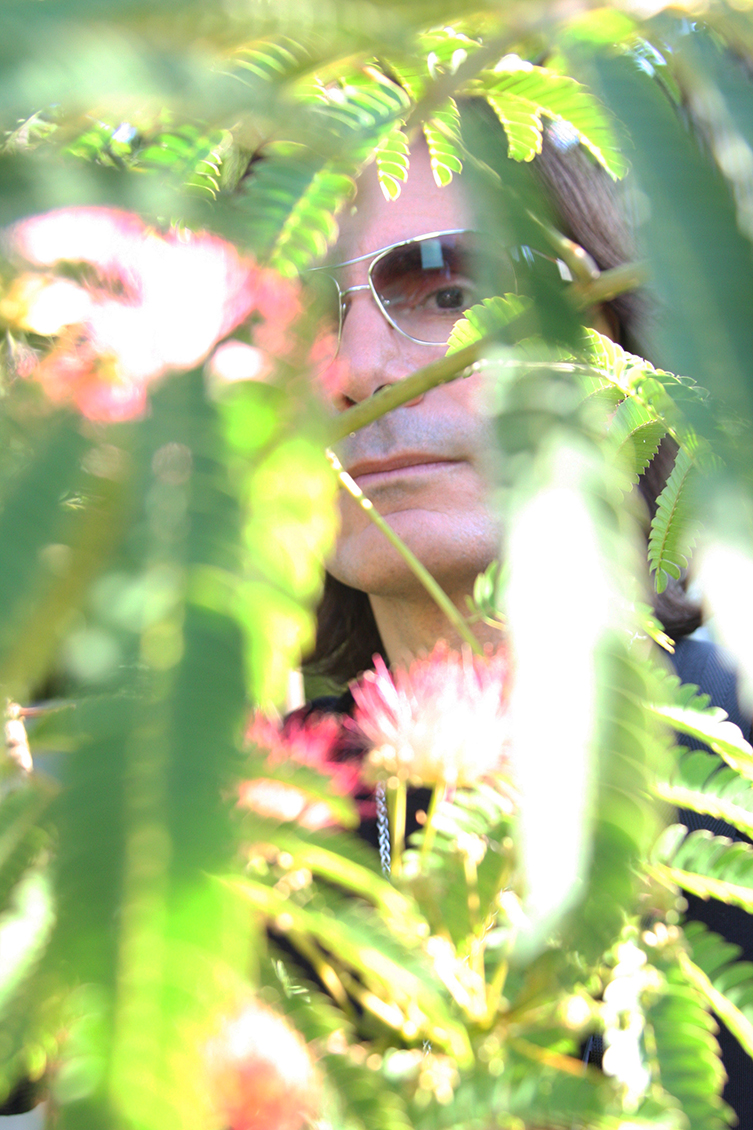
(photo: Ross Pelton)
SV: What is reality, you know? So that would be another whole dimension to the book, that would also follow chronologically. And another one, I thought would be risky, and this would maybe be why I wouldn’t do a book like this till the pull was overwhelming, would be to track my sexual growth, so to speak. Everybody has inner secrets about their own, you know, lives, their own sexual lives, so to speak.
GG: Sure.
SV: Mine, you know, mine’s not very exciting. It’s simple, but still, there was a lot of, at various times, emotional aspects to my sexuality. Sort of like, ever since I can remember like kindergarten through seventh grade, I was virtually in love with every girl in school, you know what I mean?
GG: Hahaha!
SV: I always felt completely insecure and, you know, the same kind of things that many people feel, the story’s not much different.
GG: Sure.
SV So, I thought that might be an interesting kind of a book where it kind of follows, you get a whole breadth. And it would be very revealing and very honest, I’m sure. Very funny, all those things, because my experience through the 80s and all those Rock bands was the shit that legends are made of! (laughs)
GG: Hahaha!

SV: Such crazy stuff went on, and I’ve never really talked about any of that stuff, but I know people want to hear about it. So, we’ll have to see. The pull is gonna have to...my instincts are gonna have to say to me: ‘Now’s the time to do this’. It’s like they did with Flex-able, Passion & Warfare, and Zappa, and Roth, and Crossroads and Vaideology, etc etc. There comes a point where you just think, okay: this is what I’m doing now, and this is what I’m gonna do. So, I’m waiting for that, and that’s when I would do a book.
GG: Ok, that seems like a good way to judge it. So, I have one final question, if you’ll permit me?
SV: Yeah.
GG: From your actual guitar playing, your music itself, the compositions, the instruments that you use: there’s a big focus on beauty. Do you see a big part of your mission as an artist, your life’s job, is to increase the beauty that’s out there? If feels like there’s a lot of ugliness out there that needs battled with light...
SV: Well, what’s the alternative?
GG: Hahaha! Yeah! Well, the alternative is ‘tolerate the shit’, isn’t it?
SV: Tolerate the shit, and I’m done with that. I’ve decided, the plan that I have for the rest of my life?
GG: Yeah?
SV: Happy, healthy, happy, healthy, happy, healthy, dead.
GG: Hahaha! That’s some plan!

(photo: Larry DiMarzio)
SV: Yeah. Haha! And that, in and of itself, requires you to recognise the things that are not making you happy. And those things are always thoughts in your head about things. Each person creates their own personal reality of the world by looking into the world through the perspective of their conditioned thoughts. And virtually all of our thoughts are conditioned be what we were told by others through our whole life, and unfortunately, much of those things we are taught are based in fear. And that creates the perspective we have of the world. When you recognise those conditioned and untrue ‘facts’ that you’ve inherited and can see how they cause all sorts of suffering in your life, you can start to let them go, and when that happens, your perspective of the world changes. It must. When you change the way you look at the world, the world changes. That may sound extraordinary, but a person could never know this unless they make that change. And it’s totally an inside job. Most people believe the outside world has to change in order for them to find happiness. But the outside world is basically just a projection of your own perspective that’s cast onto a screen of infinite potentiality that is the outside world. So you create your own reality every time. Freedom is in the realization of this.
GG: That’s incredible. The power of your own inner self.
SV: Your emotional equilibrium, so to speak. So, if you can raise your sense of well-being, then what you create will carry that in it. And that, in and of itself, will affect those that are ready for it. An example of that would be our discussion, and your feeling, about Lotus Feet.
GG: I see!
SV: Lotus Feet seemed to come about naturally and organically. I didn’t set out to change the world. You don’t know how what you create is going to affect the world. All you can do is align yourself in the creation process. And I love that! I also like heavy, intense stuff too, you know? But even in my heavy, intense stuff, I hear some kind of joy.

(photo: Ross Pelton)
GG: Yeah, definitely! Well, heaviness can be cathartic as well.
SV: Yeah, that’s one of the things I hear with Ghost.
GG: Yeah!
SV: Devin Townsend’s music, too.
GG: I love Devin, he’s a wonderful human being.
SV: Oh, awesome!
GG: That’s perfect, it also brings us back round to Tom Waits, doesn’t it? Affecting that inner change, it’s kind of like that ‘the way you do anything is the way you do everything’, isn’t it?
SV: Yeah, it is! You can’t avoid it!
GG: Totally! Well, that’s been a fantastic, fantastic conversation Steve. Thank you so much for staying on the line for so long and for being so generous with everything you’ve said to me. It’s been brilliant.
SV: Thank you, my pleasure. Now, you’ve got it: run with it!

(photo: Michael Mesker)
Now those are some good words to end this on!
Thirteen thousand words later, we reach the end of our fantastic journey with Steve Vai. It has been a unique and wonderful trip indeed, with insight, vision, history and lots of fun in there. It was and is a massive privilege for me to be able to bring this conversation to those who want to read it, just as it was a huge deal to have Steve on the phone in the first place. We covered a lot of ground, both anticipated and unexpected. All of it was a thrill, and Steve will be glad to know that yes, I can now do that bit from Bad Horsie, but that it’s more important for me to follow my own musical story.
Sometimes it takes a real master to point these things out, right?

Hopefully that’s something you got from this, too: that all of the power, imagination, beauty and connection you want your music to have is already there inside you, screaming to get out! Be like Steve: listen to that inner creative voice and follow the path it leads you down.
It’s the correct path.
Our deepest thanks go out to Steve Vai for being so open, accommodating and generous with his time, knowledge and insights. You’ve given us so much! We would also like to thank Dennis Schock at Gearhead and Avi at Boutique Amps for all of their help and support in the setting up of this interview.
See the Ibanez PIA guitars on our site, along with the JEM guitars and Steve’s Synergy Steve Vai module. Click through to buy yours.
Thanks for reading,
Until next time!



